Maine’s Blue Hill Peninsula and Deer Isle | A World Away
Once discovered, Maine’s Blue Hill Peninsula and Deer Isle are impossible to forget.
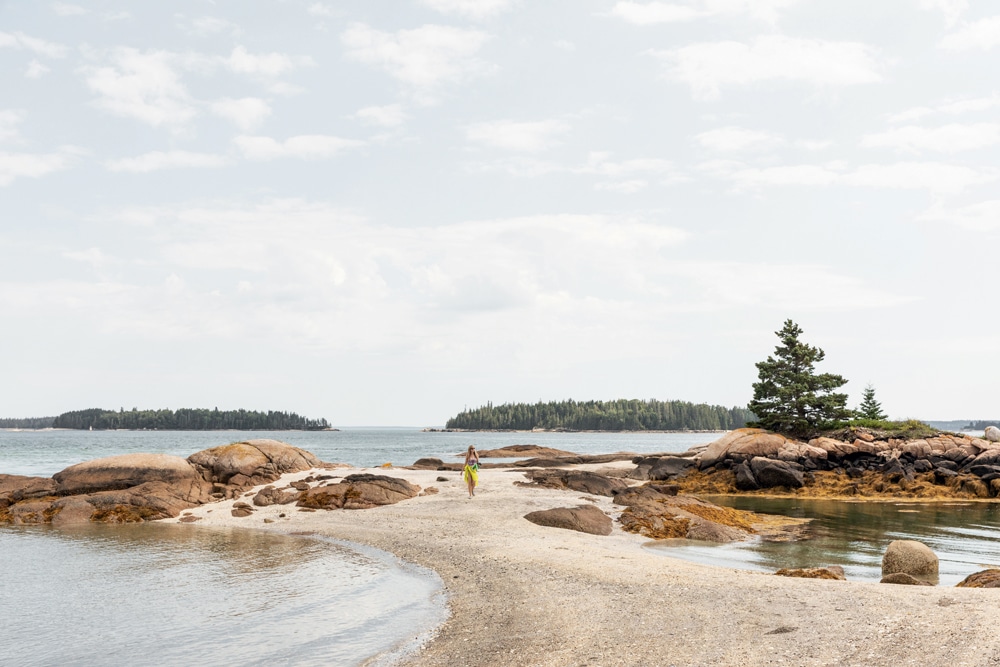
Looking out toward Eggemoggin Reach, the channel that runs between Deer Isle and the Blue Hill Peninsula.
Photo Credit : Greta RybusThe Blue Hill Peninsula and Deer Isle compose one of the largest blank areas on the map of coastal Maine. It’s a wedge of coastline, vaguely reminiscent of a semicolon, that requires about an hour’s drive from either Ellsworth or Bucksport to reach Stonington, at the southern tip. The peninsula and the isle are separated by Eggemoggin Reach, and on a map it looks as if the island is trying to slip away from the peninsula but is being held in place by a single stitch, namely the Deer Isle suspension bridge.

Photo Credit : Greta Rybus
The region is not technically blank, of course. In truth it is filled with narrow roads that swoop and rise, which often makes driving here feel like low-altitude flying. There are also people, though not many. The major towns are Blue Hill (population 2,686), Castine (1,010), and Stonington (1,032).
Yet the region tends to remain mostly blank in the popular imagination. It’s not quite midcoast, and it’s not Down East. Tourists overlook it partly because it’s sandwiched between two of the state’s most popular natural attractions: Penobscot Bay to the west, Mount Desert Island to the east. They scurry from one to the other, hustling along Route 1, following the commands of Siri or Alexa or whoever, scarcely aware of what lies south. In a more sensible world, the Penobscot Narrows Bridge would be trumpeted as the Gateway to the Blue Hill Peninsula and Deer Isle. Instead, it merely marks where you make a right turn along the coast before pressing the accelerator and aiming for Acadia National Park.
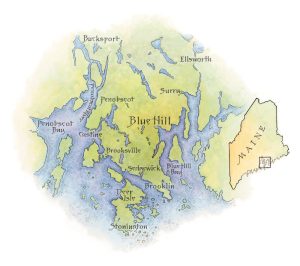
Photo Credit : John Burgoyne
On this peninsula and island, with their feathering fogs and pink granite islands, summer hangs easily, like a pair of favorite jeans, frayed around the cuffs and loose at the waist. The best summer, the region seems to suggest, is one you might not even have noticed. Summer is not a verb here. It’s barely a conjunction between spring and fall.
It’s not as if everything is understated, though. You can find the monumental between the cracks. Head to Harriman Point Preserve near Brooklin, or visit the Deer Isle walking trail out to Barred Island, and you will be rewarded with vistas that make you want to linger. The same can be said of the sweet pepper and leek soup with crab at Aragosta, the area’s best restaurant—which also takes some sleuthing, with the reward of something grand—or even the pink peppercorn chocolates made by Blossom Kravitz at Brooklin Candy. It’s the hidden things that define this region.
_
When I met Bill Henderson, he was sitting on the small, low porch of his bookstore and had just returned from getting his car repaired. “Ellsworth is a nightmare,” he announced, before bemoaning the traffic, the big box stores, the tourists slogging their way to Acadia and back. “Every summer I swear I’ll never go to Ellsworth.”
Ellsworth is just 20 minutes from his summer home outside the village of Blue Hill, but it feels a world away from the rustic life that Henderson has crafted for himself and his family on a wooded ridge across from a meadow. The sign on his shop deems it the “World’s Smallest Bookstore,” and while the claim is difficult to verify, I found little cause to question it after a quick look—the only kind of look you can have, really. The store is the size of a large woodshed, and stocked with a strikingly literary array of volumes he’s rescued from the dump and gleaned from yard sales. A handwritten note on a table near the door reads, “Please leave payments in this can.”
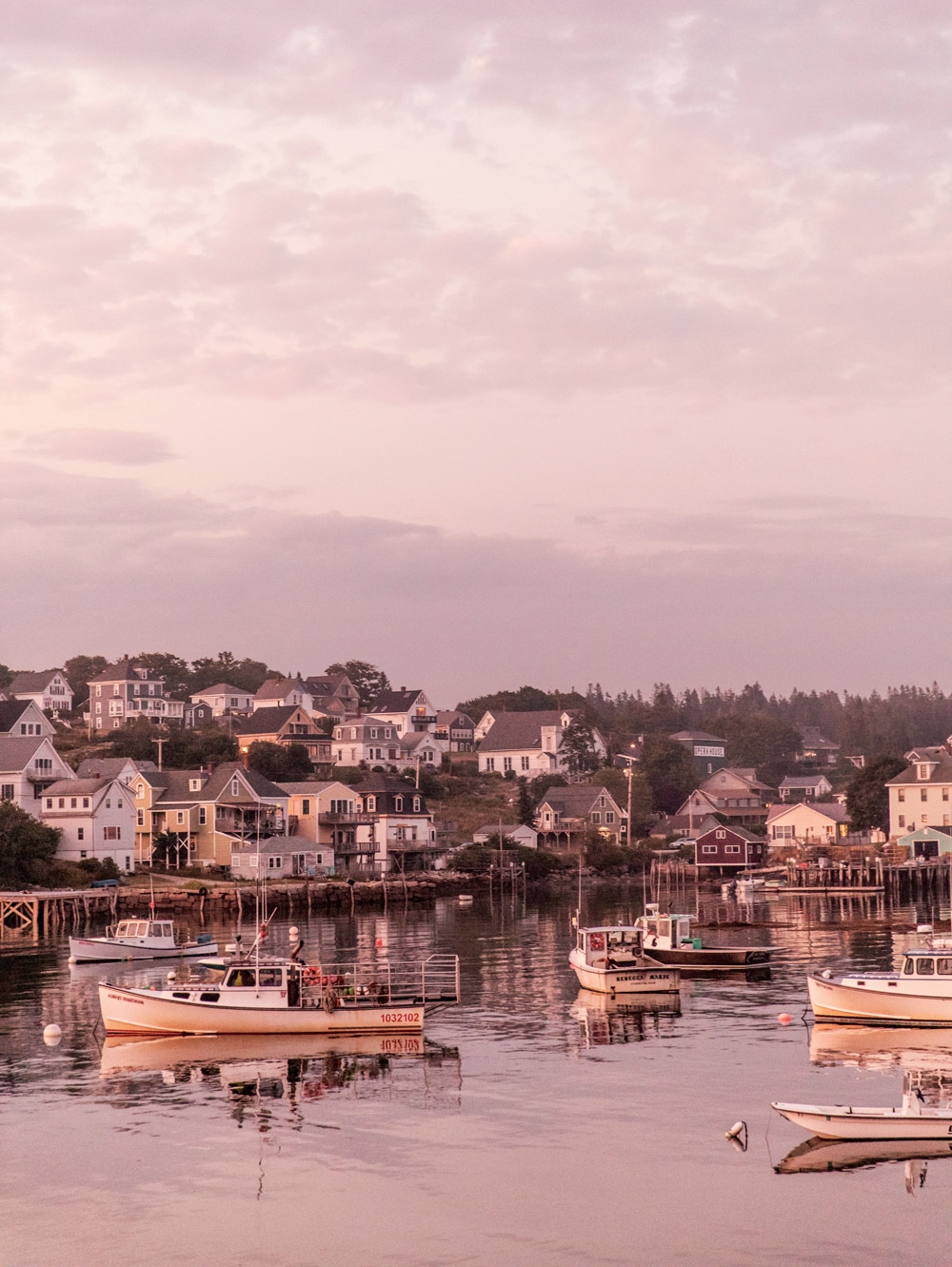
Photo Credit : Greta Rybus
The store also sells a number of Pushcart Prize anthologies, and the reason is simple: Henderson is the founder of Pushcart Press, which since 1972 has been “devoted to writers, small presses, and non-commercial publishing.” Hailed by Publishers Weekly as one of the nation’s most influential publishers, Pushcart honors the year’s best writing from the small presses—fiction, poetry, essays—with inclusion in its annual anthologies.
The raspy late-summer sound of crickets pulsed and ebbed, and we were interrupted by a passing truck. “A rare truck,” Henderson noted. Moments later, a car went by. “And another damned car,” he said.
Henderson and his family, who live the rest of the year in New York, have been coming to this part of Maine for more than 30 years. In 1995, he bought this land and started building. He began by constructing a not-entirely-useful three-story tower, having brought to this venture little knowledge of carpentry but a known fear of heights. He wanted to challenge himself, and he wanted a view of the distant bay, so he figured it out as he went along. “I built it all with hammer and saw,” he said. “No power tools.” His book Tower: Faith, Vertigo and Amateur Construction chronicles that deep-seated drive to build. (“A strange and fascinating book,” said the Los Angeles Times Book Review.)
Henderson, wearing a knit cap and a jacket the color of fallen autumn leaves, rose to show me around. He’s 79 but moved with a wiry spryness as he pointed out some of the other buildings he’s built, including the family’s main summer cottage, a roundhouse, a studio for his wife, and an eight-by-eight-foot cabin for his daughter.
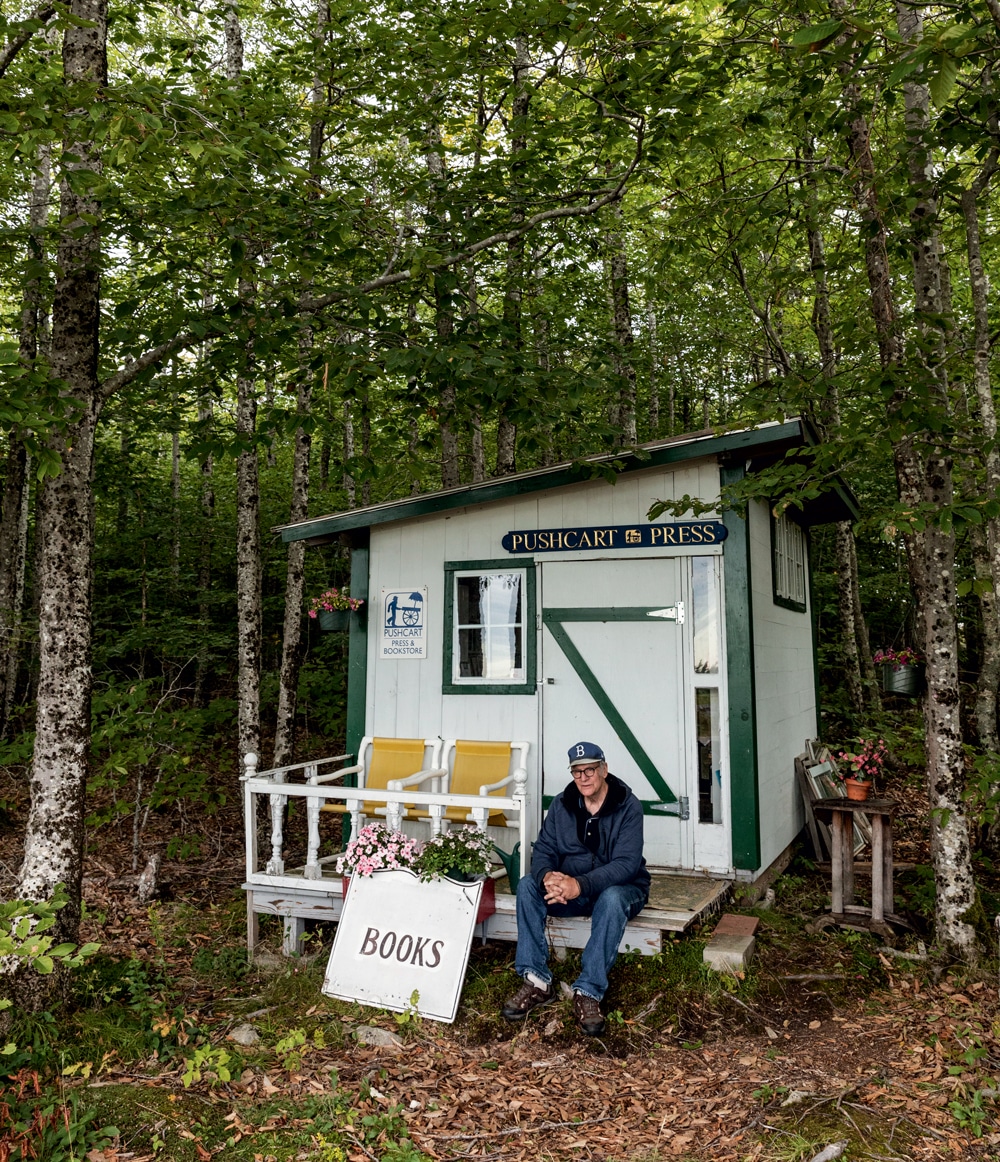
Photo Credit : Greta Rybus
“There’s a whole different feeling up here from the rest of the world, especially when you’re around frantic New Yorkers and everybody’s got an angle and an agenda,” he said. “I don’t find that up here. People stick together. They’re neighborhood people, and they help out.”
The Blue Hill Peninsula has become known for its colony of writers, including the novelists Jonathan Lethem (who deejays occasional fund-raising dance parties in a local barn), Michael Chabon, Edmund White, Ben Marcus, and Heidi Julavits.
In her essay collection titled The Folded Clock, Julavits notes that an earlier generation of writers had washed up in the town of Castine, on the western side of the peninsula, with Robert Lowell, Elizabeth Hardwick, and Jean Stafford among them. This led to Stafford’s writing a short story called “An Influx of Poets.”
“I will never write a story called ‘An Influx of Fiction Writers,’ even though there are many fiction writers in my town,” Julavits writes. “More come every year, but we don’t sit around reading our stories out loud to each other. Mostly we talk about old barns and how to keep them from falling down.”
A writer who once lived in this region and wrote a bit about barns was E.B White. He was a summer person who became a winter person, and he lived at his coastal farm in Brooklin until his death in 1985. He valued his privacy but was happy to share the Maine he knew with his readers. Through his essays for The New Yorker and his books—notably, Charlotte’s Web—he crafted a Maine that is stubborn but endearing, flinty but endowed with moments of grace. White’s writing is lyrical and filled with spare yet elegant turns of phrase, and it has done much to influence the way outsiders view this state.
One could argue that this role now belongs to John Hodgman, a writer and former The Daily Show guest star who may be best known for playing the stodgy “PC guy” in Apple’s “Get a Mac” ad campaign. Hodgman applied his own take on Maine in his 2017 book, Vacationland, and to a lesser degree in last year’s Medallion Status. He writes adroitly about getting to know his neighbors, and about how he, an avowed Brooklynite, has come to understand Maine. He can be as understated as White but with a more deadpan humor. “These beaches are not for relaxing on,” he told me when extolling the region’s virtues. “They are for existential crises—for sitting on the beach and thinking about death.”
Hodgman first came to Maine at the behest of his wife, who visited family here each summer. Her grandmother was a “from away” who eventually moved here permanently, as did one of her sons. Summer visits led to Hodgman and his wife buying a house on a nearby peninsula, and spending as much time there as possible.
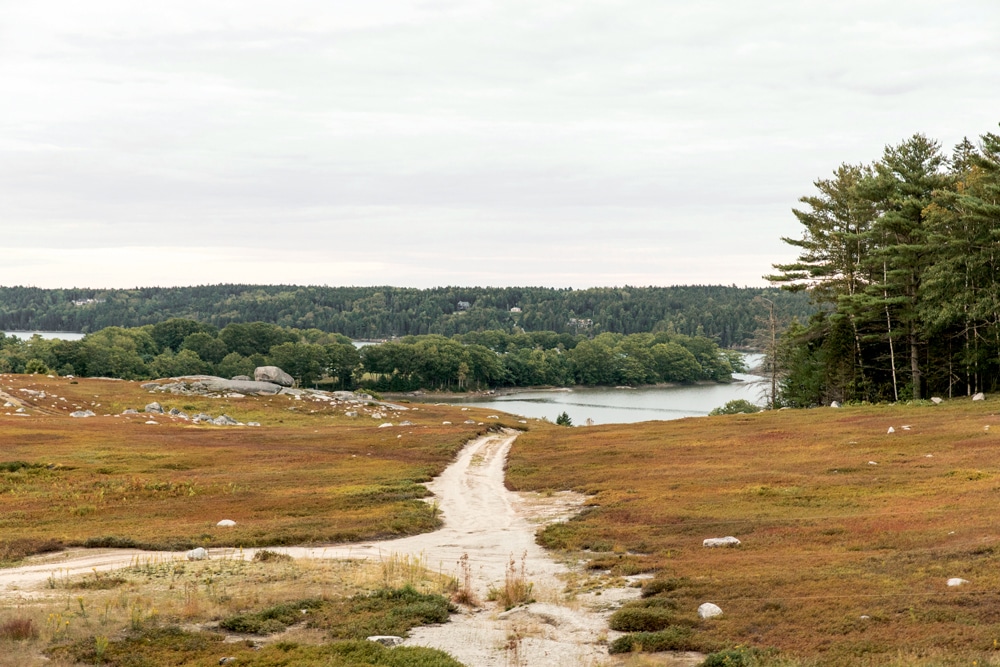
Photo Credit : Greta Rybus
One way a region regenerates is by summer people becoming year-round people, which seeds another generation, and Hodgman spoke of his hope of moving here year-round one day. Of course, dreaming about being a full-time resident of coastal Maine is a time-honored way to pass a summer while basking in the fleeting warmth of the sun. This dream often fades when one visits the icebound coast in dark months. Yet Hodgman has been dipping his toe into winter here with holiday trips, and the experience hasn’t fully dissuaded him.
“It’s very social,” he said, admitting that this came as a bit of a surprise—he had expected a more solitary existence, based on his wife’s memories of doing nothing and seeing no one while at her grandmother’s. “What we didn’t anticipate until we moved here was the number of fascinating people—all the interesting dreamers who had gotten to know each other.”
And he has noticed more young people starting to drift in. “A young family moved onto our road about a half mile away, then went from door to door introducing themselves to all their neighbors,” he said. “It was very unnerving to have someone knock on your door in Maine. But they’re a lovely young couple, and I hope they’re thriving.
“One day we want to disappear into the peninsula with our own weird dreams,” he said. “It’s a different planet. It’s a reminder that the monoculture that we think we live in—on the Internet and Twitter and in certain big cities—is really not true. There’s a lot of really intense regionalism in the United States, and that’s fascinating to reckon with.”
_
As in rural areas everywhere, residents on the Blue Hill Peninsula and Deer Isle have been trying to figure out how to keep their kids from drifting off to job-filled cities after high school. While lobster fishing continues to offer a vocation, other local routes to adulthood have traditionally involved industries that now have largely dried up, like commercial farming and quarry work.
Yet Deer Isle and Blue Hill have been seeing a positive trend of late: a trickle of entrepreneurs, many of whom are homegrown. They are sometimes the offspring of the back-to-the-landers who drifted here, seeking simplicity and community, as they followed in the wake of Helen and Scott Nearing. (The Nearings were early back-to-the-land evangelists who built a largely self-sufficient compound in Brooksville in 1952; their influential book Living the Good Life was published two years later.) These local entrepreneurs, in turn, are attracting other folks—many in their 20s and 30s—who have been arriving with an idea of settling down and starting their own businesses.
“My niece lived with us about 20 years ago and there was nothing for her here, so she moved away,” said Peter Beerits, an artist and entrepreneur who lives on Deer Isle. But migration patterns started to slow and then reverse about a decade ago, he said. “I started to notice all these young people here in winter.”

Photo Credit : Greta Rybus
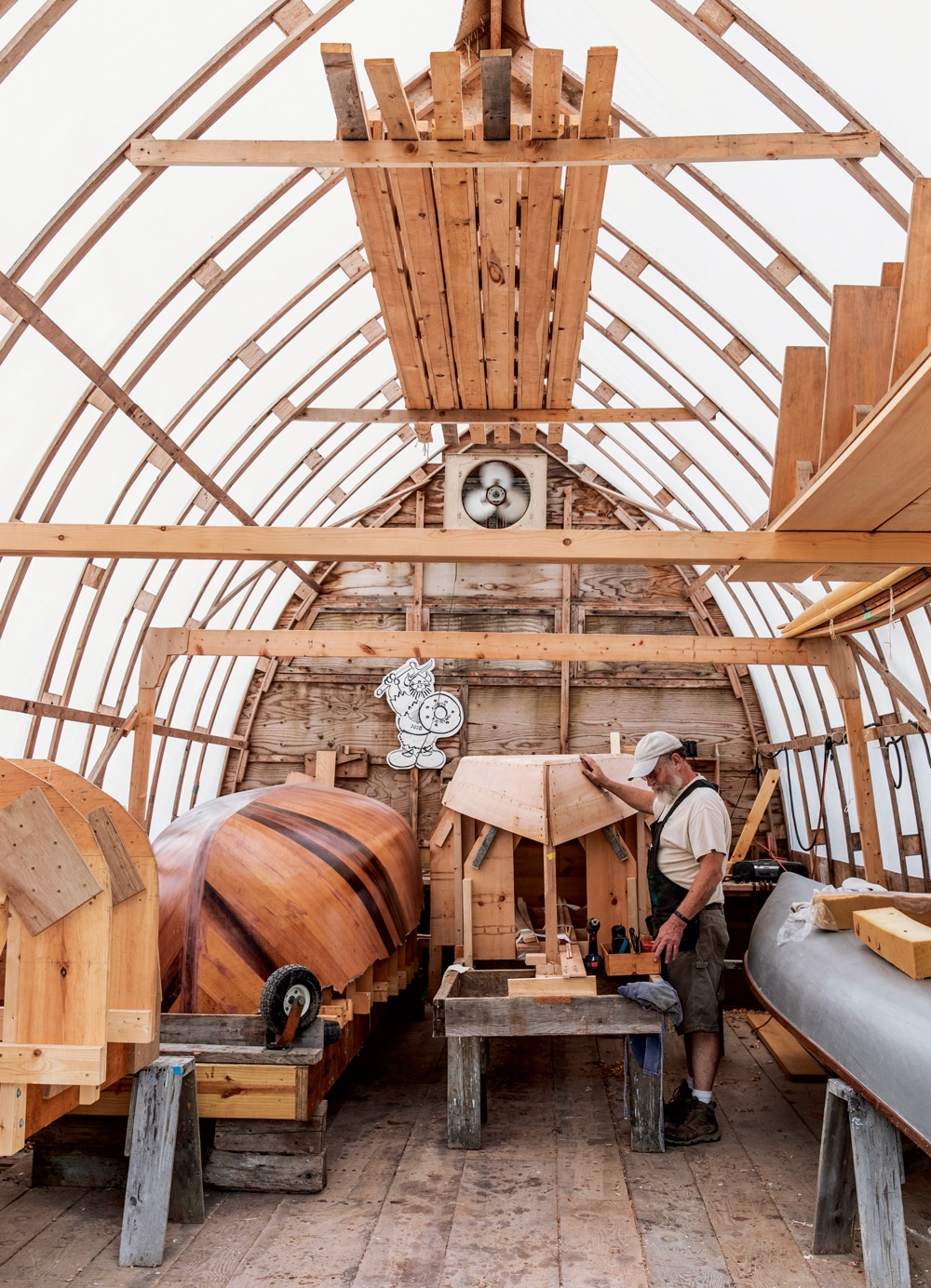
Photo Credit : Greta Rybus
Beerits has been on Deer Isle for 35 years, having first visited with his parents on summer trips. “It was a place where the world was completely different, and that’s what I was looking for,” he said.
In 1984, he founded Nervous Nellie’s Jams and Jellies, initially turning out batches six jars at a time and selling to national accounts through fancy food shows. Business lagged, but then he started catering more to locals and travelers, and sales blossomed. He hired a cook, and then an assistant cook. “But what I really wanted to do was build Nellieville,” he said.
Nellieville is essentially an immersive, village-size artwork that occupies a few acres of woods and clearings around Beerits’s store. It’s Tim Burton meets Wes Anderson: a little bit charming and a little bit puzzling. Multistory castles are filled with knights, and a country grocery store with blues musicians. The human-form sculptures are made of welded scrap—engine parts, lighting fixtures—and set amid rough-hewn architecture. Most of the characters have large and lugubrious faces, as if saggy from life.
Beerits has created a visually complex and memorable world filled with the strange and improbable, such as a conveyor belt disgorging bright gold ducks as if from a duck forge. At the store, I asked his wife, Ann, where he got his ideas. “Artists are just filled with ideas,” she said, “and have to find a way to let them out.”

Photo Credit : Greta Rybus
A few minutes’ drive away is the Haystack Mountain School of Crafts. It was built in 1961, designed by modernist architect Edward Larrabee Barnes. Like Nellieville, the campus has soft, dreamlike qualities, with shingle-sided workshops, a dining hall, and other buildings built on piers and connected by boardwalks, so that the whole of it seems to hovers a foot or two above mosses, lichens, and ferns. A broad outdoor stairway leads to a platform overlooking Western Cove. The dreamlike effect is enhanced in a fog.
“This place is sort of built for Instagram,” said Paul Sacaridiz, the school’s executive director. “Everything is in a square format.”
FacadiHis comment arose in a discussion about how the school has adapted to changing times over nearly six decades. In many ways, the world has simply caught up to Haystack—it was among the first of what are now called maker spaces. And thanks to Etsy and other craft platforms, goods made by hand have become more mainstream. “Even The New York Times is saying that pottery is the new Pilates,” Sacaridiz said with a laugh.
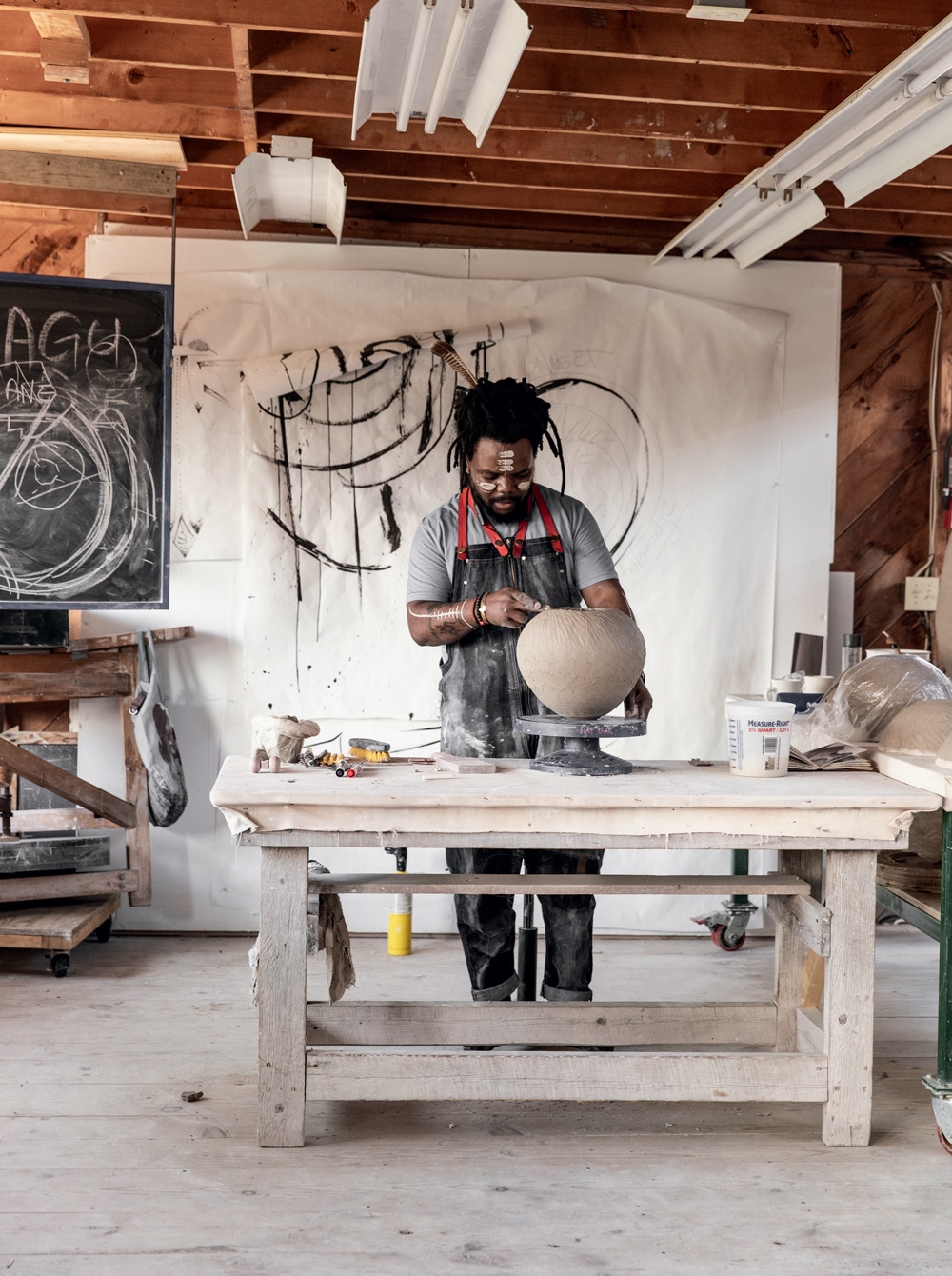
Photo Credit : Greta Rybus
Haystack has followed craft where it’s led, and that has ushered the school into the high-tech world. (When Haystack opened, pottery students did all their work by hand because using molds for ceramics was forbidden.) Sacaridiz walked me to the Fab Lab, which opened about a decade ago. A digital-fabrication laboratory created in partnership with MIT’s Center for Bits and Atoms, it allows students to make, well, just about anything they can imagine. The students of 1961 would have found the equipment here inscrutable: an Epilog Legend 24TaT 35-watt laser cutter and a Sindoh 3DWOX filament printer, to name two. There are even 3-D printers that can replicate themselves by making each of their component parts.
Among Sacaridiz’s goals has been to make the school less insular and more connected to the community. Haystack launched a local internship in digital fabrication this past winter, and has invited area high school students to use its equipment.
Sacaridiz, too, has noticed the rise of younger islanders. “There’s this new entrepreneurship happening, particularly among those in their 30s, and they seem to be attracting others.”
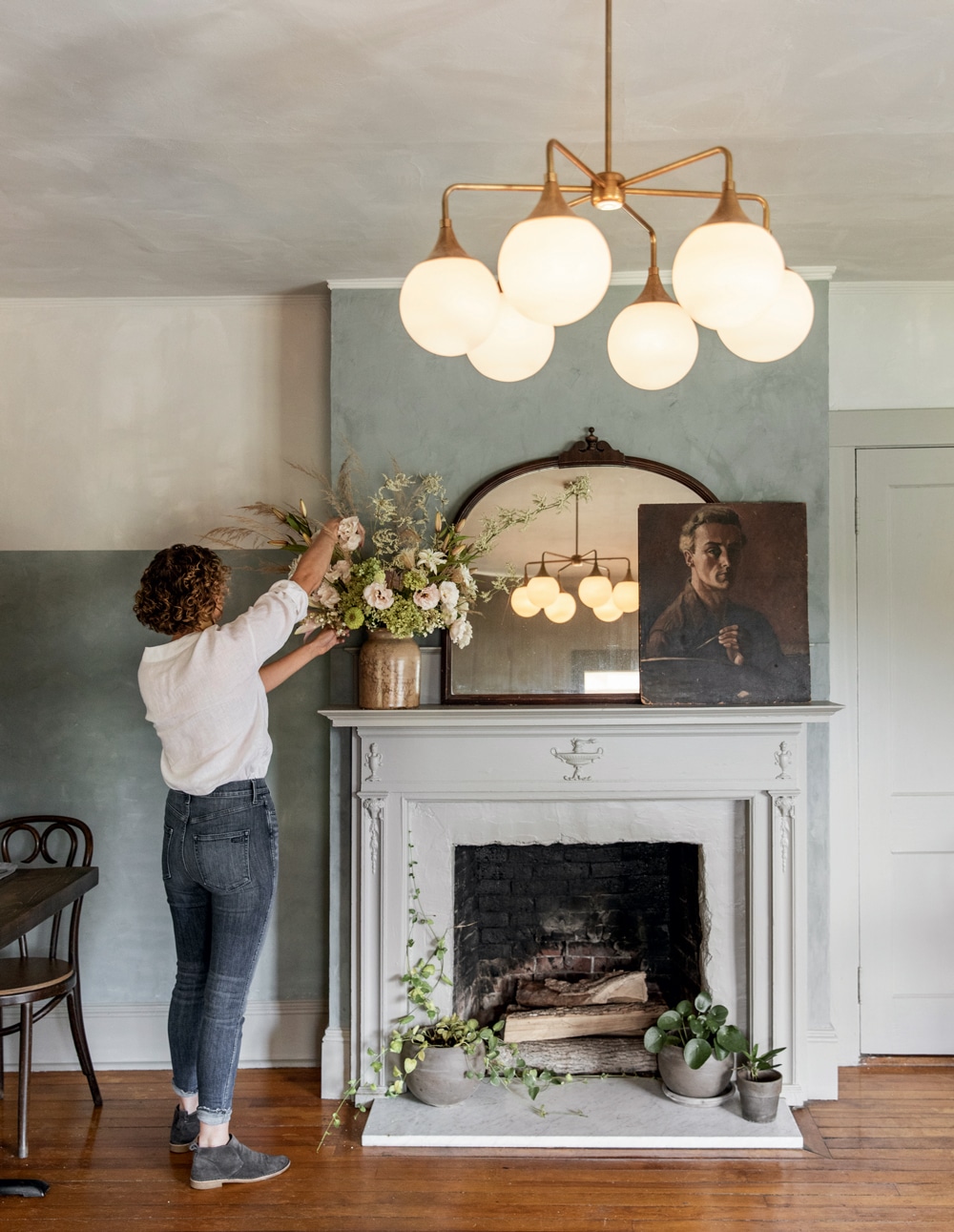
Photo Credit : Greta Rybus
He suggested I visit 44 North Coffee, a roaster owned by two young women who have opened a pair of shops in Stonington, on the southern tip of Deer Isle. “Viewed from the outside, these would seem telltale signs of gentrification,” he said, except that the business is native-born, and the owners are sensitive to making it comfortable for everyone, fishermen as well as tourists.
“From my perspective,” he said, “they are the linchpin, the site from which things are bubbling up and making people pay attention. You should go.”
_
It was oyster night when I walked into 44 North, which during the day is a place for cappuccinos and muffins. People were lined up to buy a glass of wine and order a dozen shucked raw oysters or two before settling in at the tables, whose tops are made of island pine and legs of metal salvaged from repair work on the Deer Isle bridge.
Melissa Raftery and Megan Dewey-Wood started 44 North a decade ago. Dewey-Wood grew up on the island, and after making friends with Raftery, a former river rafting guide, discovered they had a shared fondness for gourmet coffee. They started ordering from different craft roasters around the country, and at one point they wondered, How much would a roaster cost?
They launched 44 North on the second floor of the old Deer Isle schoolhouse, and sold their first bag of coffee in 2010. They’ve since expanded with a summer café in Stonington and another in the village of Deer Isle, where they now do all their roasting. They sell coffee at retail and have about four dozen wholesale accounts in the summer, maybe half that in the winter. They also sell online, which makes winter survival more feasible.
Their business is part of a larger shift, as a new generation revisits food production—although now turning from the commodity farming of early island residents to something more artisanal, creating added value. It’s a sensible approach, as Maine has a sound reputation for its fruits, organic produce, and fresh seafood, and that can help open doors.
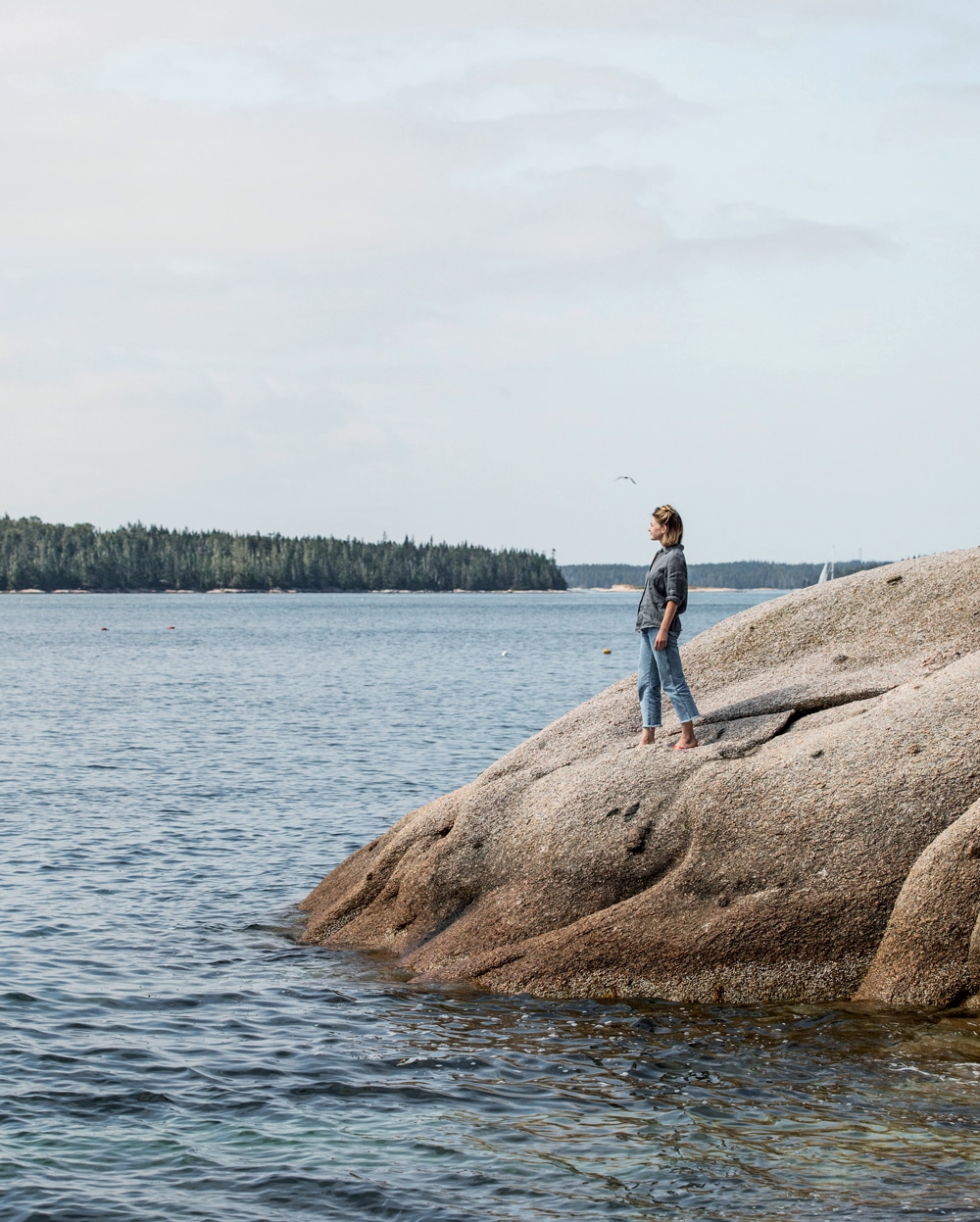
Photo Credit : Greta Rybus
At Oyster Night at 44 North, Abby Barrows was shucking oysters and greeting customers. She was one of the children that came out of the earlier influx—her father moved here in the late 1960s and bought the local newspaper. Barrows left the island to study science, focusing on ocean ecosystems at the University of Tasmania (“There was a lot of diving and looking at sea horses,” she said). She eventually returned home, bringing her knowledge from afar to her erstwhile backyard.
“I had to leave it to love it,” she said. At first she worked on a lobster boat and found jobs monitoring water quality. Then in 2008, she called a local oyster farmer to inquire about buying oysters. “I don’t have any oysters,” she was told. “Do you want to buy the farm?”
She did, and then began the process of becoming a sea farmer. Starting with about 5,000 oysters from the previous owner, she has since built that up to about 200,000. “And I can move every oyster I grow on the island,” she said. She has a few wholesale accounts but mostly sells direct to consumers, including here on Oyster Night, as well as the summer night market.
Barrows is pleased that a wave of young islanders is moving in, including those without previous roots on the island. “I have three friends who bought houses in the last year and a half, and none had ties here before,” she said. And while the influx is new in her lifetime, she sees in it an echo of the wave that brought her dad and others looking to flee the cities a generation ago.

Photo Credit : Greta Rybus
She assumes that dramatic changes are on the horizon: As ocean waters warm globally, there’s likely to be an impact on the lobster fishery, and to adapt, fishermen will need to shift into other careers. “The only way to thrive is to borrow, interact, and communicate with everyone,” she said. “One of the reasons for getting into aquaculture is that it’s one of the most sustainable fisheries on the planet, and it’s probably going be a major source of protein for the masses. It can be a model for the fisheries industry here. Fishermen can shift, but still use a lifetime’s worth of skills and knowledge with sustainable fisheries.”
_
Last summer a celebrity lobster appeared in Stonington. Exactly half of it was a mottled black-green, like the ones that local fishermen see every day; the other half was bright orange, as if fresh from the pot. The line between the colors was precise, as if someone had fabricated it as a novelty using a 3-D printer.
The lobster was residing temporarily at the Maine Center for Coastal Fisheries, on a wharf in Stonington, and when I stopped by, docent Leroy Weed Sr. took it out and rested it on his forearm so that a few of us could examine it and snap pictures. The lobster seemed complacent, even a little bored, as if resigned to its fate as an Instagram star.
Lesser celebrities also occupied the tank: a blue lobster and a calico one. “This one is a one-in-two-million lobster,” Weed said, pointing to the blue. And the calico: “This is one in 30 million.” The half-and-half? “One in 50 million.” I cocked an appreciative eyebrow and nodded, marveling that someone somewhere had the job of calculating the odds on freakish lobsters.
In earlier times, the appearance of unusual animals was viewed as a harbinger of one fate or another. And on this day, and at this place, I had to believe this was also a sign—that a new cultural model was at hand, a mix of “from away” and “from here” that would allow the peninsula and island to thrive as we hurtle toward an uncertain future.
As Weed put the lobster back into the tank, a young woman asked if the nonbinary lobster would have babies with its same coloring. “No, miss,” said Weed, “because that one’s a male.”
The next week, he said, all three would be put on a lobster boat, taken a few miles offshore, and released to the waters.


